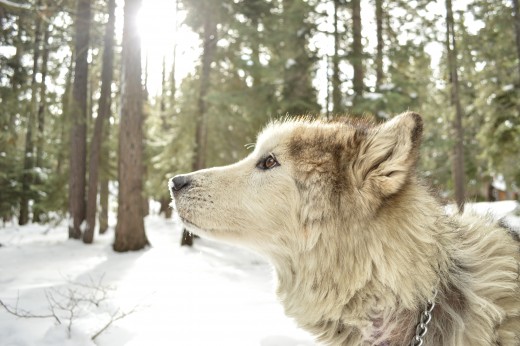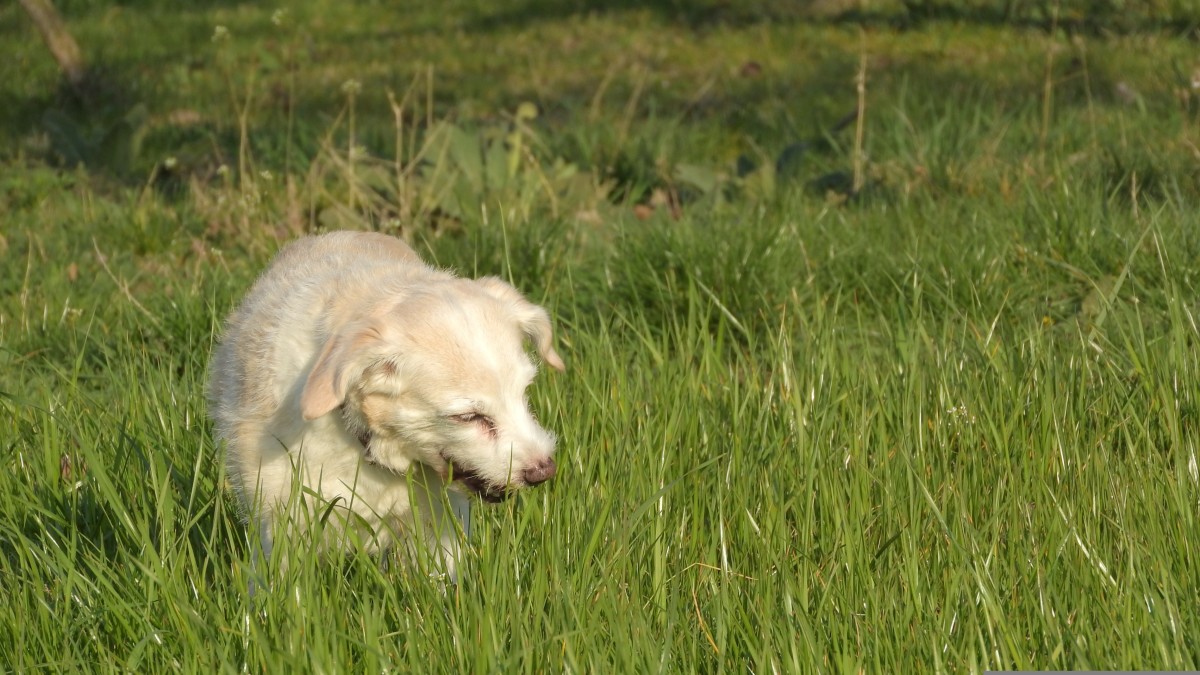- HubPages»
- Pets and Animals»
- Dogs & Dog Breeds»
- Dog Behavior
Why Does My Dog Bark?
Barking to Communicate
Barking, and other forms of vocalization, are natural behaviors for dogs; it is one of four methods dogs can use to communicate with each other, the others are Scent, Body Language and Touch.
Not only is vocalizing normal for dogs, it is actually one of the reasons our ancestors fell in love with them, in fact, they particularly liked dogs that barked as they warned them of potential intruders, animal or human. At that time we often selected breeding pairs with this in mind. It is little wonder then that some of our pet dogs love the sound of their own voice, the problem is that our life styles have changed dramatically over the years and we no longer need dogs to fulfill this important role, they do however, retain the instinct we bred into them all those years ago, and sometimes this can cause conflict.
Vocalizing can take several forms but most can be characterized as howling, growling, crying, whining or barking, the one your dog uses will depend very much on what your dog is trying to say at that time and how urgent the message is at that time!
The Basenji is the only breed of dog that doesn't bark - they sing instead!
Excitable Dogs Bark
When dogs get excited their whole body springs into action; adrenaline flows, the heart rate increases, they breathe faster and they become more alert. All this means that, instead of considering things in a thoughtful way, they start reacting much faster to what is happening around them, and for many dogs this means that they bark, whine or even howl.
Many dogs get excited at some point, most often it happens when friendly visitors come to the home or when they get in the car, or get ready to go for a walk, but in all cases, it serves no real purpose, and if it is persistent it can be extremely annoying to everyone that has to listen to it.
Quietening a dog that is over excited always starts by calming the dog in a way that does not reward the dog in anyway; in most cases this will involve using a lead to restrict the dogs movement and a lot of patience while you stand still and completely ignore him. It could take a while for your dog to settle, and even then, he may get excited again as soon as you continue with the activity you were originally attempting, but if this happens you should just stop and ignore him again. This way, the activity that your dog is so excited about now becomes a reward for quiet, calm behavior.

Barking for Attention
Barking and crying for attention is something most dogs first learn to do at just a few weeks of age, it is an essential early form of communication as, at such a tender age, it could mean the difference between life or death. It is a natural behavior that is designed to get mums attention and let her know that there is a problem, maybe the pup has become separated from his mum, is hungry or cold, in any case, she is biologically wired to quickly respond to the calls of her pups. As your pup ages, he remembers how easily he got attention using his voice, and experiments on his human family, who often find it just as hard to resist, just like his mum. It doesn’t take him long to perfect this skill, and in no time he will have you petting him, feeding him, fetching his toys and even walking him on command!
As this behavior is entirely learned, it can be unlearned, as long as you have the patience to see it through, just remember, your dog has been getting away with this behavior for a while and it will not be stopped overnight.
So, to stop the barking, you must stop it from working for him, and the only way to do that is to completely ignore it, no matter how hard it is, you must resist the urge to give him the tidbit or give him that belly rub. It is common for this type of behavior to get worse before it gets better, this is because it has worked well for so long that when it suddenly stops working, your dogs natural response is to try a little (or a lot) harder, don’t worry, he will soon realize it is still not working, just as long as you remain determined and calm.
The loudest bark recorded by a dog measured 113.1dB and was made by Charlie, a Golden Retriever, in Australia, on the 20th October, 2012.
— Guinessworldrecords.comTerritorial Barking
Territorial barking is very important, years ago dogs were selectively bred for it and it is an instinct that remains in our pet dogs today. Although, these days it is perhaps not so useful to the pet owner, your dog will still feel the need to bark at people and animals that come near his territory, whether that be the next door neighbors, the postman or a dog on the TV.
As a wild dog, territorial barking was essential to alert the rest of the pack to a possible threat, it works better than any other form of communication as the sound can carry for a fair distance and would have brought local pack members back to the den so they could assist in protecting the pack and keeping their resources safe.
These days, many people report this type of barking as a nuisance and are seeking help to stop it, but we must allow a certain amount of barking before we intervene, this allows your dog to behave normally and also helps him feel useful. However, a couple of barks can easily get out of control and when this happens; it is perfectly fine to discourage it.
The first step to solving this problem is to thank the dog for a job well done, so when he starts barking, casually go to him and say a warm “thank you,” then calmly take him away from the place he is barking and keep him away until he is calm and quiet. It is important that you act casual and don’t shout, he is reacting to a threatening situation, if you rush in shouting for him to be quiet he will only think you are joining in with him and that will reinforce his unwanted behavior. So do the opposite and he will see how calm and in control you are and will feel reassured by your demeanor.

Aggressive Barking
Barking and growling are effective ways communicate if your dog is feeling threatened, these vocalizations work to warn another dog or person that he may become aggressive if they do not change their behavior, they also work to alert the rest of his pack that he is in trouble and that he wants support.
This type of vocalization is very natural and must never be discouraged, to deny your dog his right to express his unease in that, or any way for that matter, would most likely result in a very unpredictable and possibly dangerous dog. We have all heard stories about dogs that bite without warning, often when this happens the dog has been scolded for this type of vocalization in the past and this is the sad result.
Instead, when you are faced with a growling dog, or a dog that is barking aggressively, first try to figure out what the dog wants from you, maybe he wants you to back away, or give him the food or toy in your hand, then carefully and quietly, do what he wants. After the situation has calmed and the danger passed, it is time to seek help from a professional who can properly assess your dogs behavior and give you appropriate advice.
Play
When dogs play with each other, they practice lots of behaviors that are natural to them, such as fighting, hunting and ways of communicating including body language and, of course, barking. This keeps their skills sharp, just in case they should ever need them, so unless barking becomes aggressive, fearful or the dog is over excited, he should be allowed to bark and cry a bit when playing, if it does become a problem, then you must stop play time until he has settled and then play can continue safely.
Barking out of Fear
When dogs bark or cry out of fear, they are usually trying to either call their pack back or scare a threat away.
Dogs that have separation anxiety cry or howl because they can’t cope with being left alone, it is actually perfectly natural for a dog to feel like this as he is a social animal and only feels fully secure when he is in the comfort of his family group, however it doesn’t suit us as pet owners to be with our dogs 24 hours a day, so they must learn to adapt slightly to our lifestyles. Most dogs can learn to cope with solitude for approximately four hours in a day, but if they are still struggling with it, then action must be taken to make the dog feel confident that he is safe and that you are coming back.
Separation anxiety is a tricky problem to solve, but most dogs will feel better with reduced amounts of attention before you leave and after you return. A safe place like a covered crate or other enclosed space can also provide a little comfort to a frightened dog, as can some artificial anxiety relievers such as plug-in adapters and collars or natural remedies. With all this in place, start small and gradually increase the amount of time you leave your dog as his confidence increases.
If your dog is trying to scare something away that is frightening him, such as another dog or maybe a particular object; the solution is not to discourage the barking, but to re-introduce him in a positive way and re-socialize him with whatever it is that is frightening him, whether it be other dogs, a particular object or type of person. With this type of training, he will in time, no longer feel the need to bark and will be able to cope better in that situation.

Boredom
Last but not least, dogs bark, cry or howl out of boredom. This can look like separation anxiety as it will only happen when the dog is alone, but the solution is very different. This dog needs more company, physical exercise and he also needs more mental stimulation, which could be achieved with a few problem solving activities or maybe you could start working on improving his obedience at a class, or take up dog agility.
Anti-Barking Collars
There are a number of stop-barking collars and devises that are available on the market, they all work in slightly different ways and suit a range of budgets, however, I don’t recommend using these, or similar devices. If your dog is barking, it is because he is trying to tell you something, banning the barking will not solve the underlying problem, and your dog will only seek out a different way to express himself, or he will suppress his instinct and suffer inwardly until he snaps out of frustration. I always recommend getting to the root of the problem, with a little work you will have the barking under control and a happy and contented dog.
And Finally...
As we can see, almost all barking is normal and serves a purpose and in most cases is just an accepted part of owning a dog. However, sometimes it does become excessive, and when it does it can be unbearable to those around him. Whatever the cause of the problem, the best advice is always to stay calm and be quiet, it will never help to shout at a barking dog, nor will it help to get over excited yourself.
Does Your Dog Bark Excessively?
© 2016 Caroline Brackin




